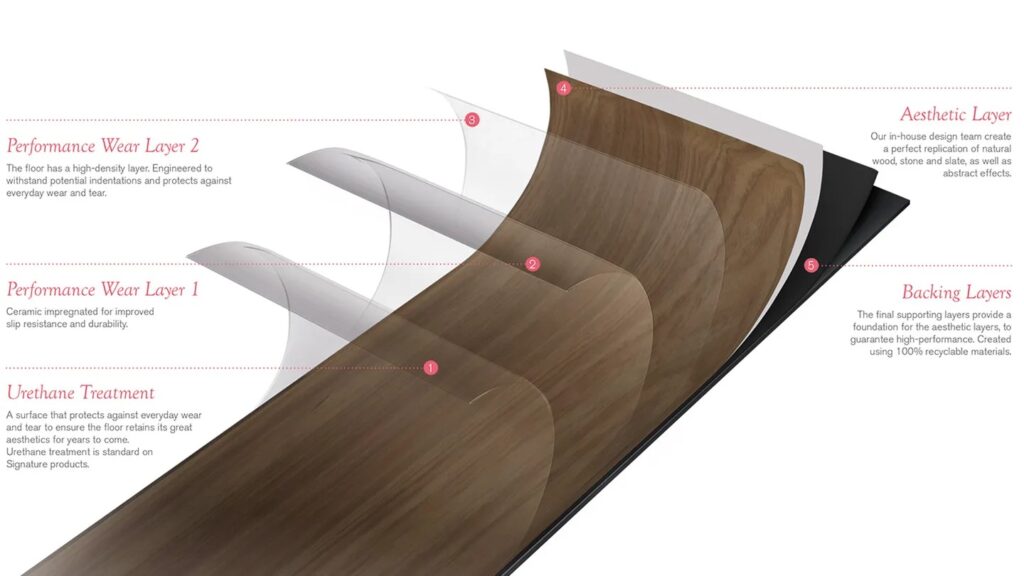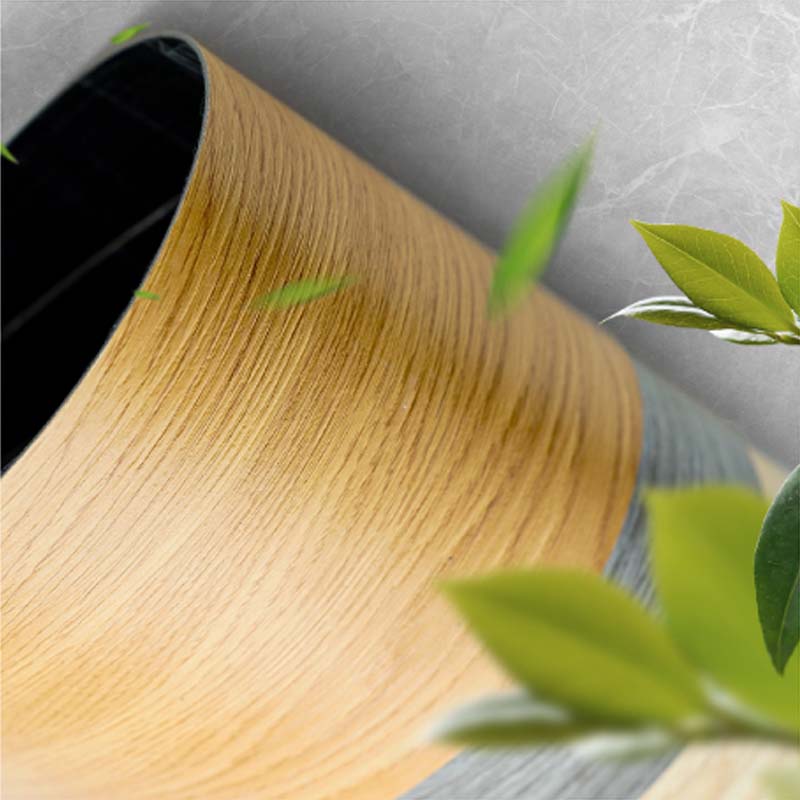When it comes to choosing the right flooring for your space, the options can be overwhelming. Two of the most popular types of flooring today are Luxury Vinyl Tile (LVT) and Stone Plastic Composite (SPC). Both offer durability, style, and ease of maintenance, but how do you decide which one is right for your project? Understanding the key differences between these two flooring options is essential in making an informed decision.
LVT and SPC flooring are both popular for their durability and aesthetic appeal, but they differ in composition, installation, cost, and performance. LVT offers a more flexible design while SPC provides enhanced rigidity and water resistance.
In this article, we’ll break down the main differences between LVT and SPC flooring, comparing their benefits, performance, and suitability for various environments. Whether you’re renovating your home or designing a commercial space, knowing the nuances of each type can help you select the best flooring solution for your needs.
1. What Is LVT Flooring and How Is It Made?

Luxury Vinyl Tile (LVT) is a highly versatile and durable flooring option that mimics the look of natural materials like wood, stone, and ceramic. LVT is made from multiple layers, including a backing layer, a vinyl core, and a protective wear layer. This construction allows it to be water-resistant, easy to clean, and available in a wide range of designs.
LVT flooring is a multi-layered synthetic product designed to resemble natural materials. It’s made from a flexible vinyl core that allows for easy installation and versatility in design.
- Construction: LVT is made from several layers of materials, including a PVC backing layer, a flexible vinyl core, and a protective wear layer. The wear layer is usually the most important for durability, as it protects the surface from scratches and scuffs.
- Design Options: One of the biggest advantages of LVT is its design flexibility. It can replicate the appearance of wood, stone, and other natural materials, providing the aesthetic without the high cost or maintenance.
- Performance: While LVT is durable, it is more flexible than SPC, which allows it to perform well in areas with slight subfloor imperfections. It’s ideal for both residential and commercial spaces due to its aesthetic appeal and resilience.
| Layer Type | Function |
|---|---|
| Backing Layer | Provides stability and moisture resistance |
| Vinyl Core | Offers flexibility and durability |
| Wear Layer | Protects against scratches and stains |
2. What Is SPC Flooring and How Does It Differ from LVT?

Stone Plastic Composite (SPC) is a rigid, more robust flooring option that is composed of a mixture of natural limestone powder, PVC, and stabilizers. Unlike LVT, which has a flexible vinyl core, SPC features a dense, stone-like core, making it more stable and resistant to impacts. SPC is also highly waterproof, making it suitable for high-moisture areas such as bathrooms and kitchens.
SPC flooring is made from a rigid stone-plastic composite core, making it more durable and stable compared to LVT. It excels in moisture resistance and impact resistance.
- Core Material: The main difference between SPC and LVT lies in the core material. While LVT uses a flexible vinyl core, SPC uses a stone-plastic composite core, which makes it more rigid and resistant to heavy foot traffic.
- Water Resistance: Both LVT and SPC are water-resistant, but SPC takes it a step further with its completely waterproof core. This makes SPC ideal for environments like basements or bathrooms where moisture levels are higher.
- Durability: SPC is considered more durable than LVT in terms of resisting impacts and heavy usage. Its rigid core provides more stability, making it a great choice for high-traffic areas and commercial spaces.
| Property | LVT | SPC |
|---|---|---|
| Core Material | Flexible vinyl core | Rigid stone-plastic composite core |
| Water Resistance | Water-resistant, but not waterproof | Fully waterproof |
| Durability | Suitable for moderate traffic | Ideal for high-traffic, commercial use |
3. Which Flooring Option Is More Durable: LVT or SPC?

Both LVT and SPC flooring are known for their durability, but the level of durability varies based on the material composition and construction. SPC generally outperforms LVT when it comes to impact resistance and stability. However, LVT offers its own benefits in terms of comfort and sound insulation.
SPC flooring is more durable than LVT due to its rigid core, making it better suited for high-traffic areas. LVT, while still durable, may show wear faster under heavy impact.
- Impact Resistance: The stone-plastic composite in SPC makes it highly resistant to impacts, ideal for environments with heavy furniture or high foot traffic. LVT, while durable, is more flexible and can be more prone to damage from heavy impacts.
- Surface Durability: LVT’s wear layer protects the surface from scratches and stains, but it can wear down more quickly in commercial spaces where heavy traffic is common. SPC, due to its solid core, holds up better against physical damage over time.
- Comfort and Noise: While SPC is rigid, LVT’s flexibility makes it softer underfoot, providing better comfort and sound insulation, especially when installed with an underlayment.
| Feature | LVT | SPC |
|---|---|---|
| Impact Resistance | Moderate, flexible core | High, rigid core |
| Surface Durability | Good, but wears faster in high traffic | Excellent, retains structure longer |
| Comfort & Noise | Softer and quieter underfoot | Less comfortable, noisier than LVT |
4. How Do LVT and SPC Flooring Compare in Terms of Installation?

Both LVT and SPC flooring are designed for easy installation, with many styles offering a click-lock system that doesn’t require glue. However, the rigidity of SPC may make it slightly more difficult to install, especially on uneven subfloors. LVT’s flexibility allows it to be installed over a wider range of subfloors with fewer complications.
Both LVT and SPC offer easy DIY installation options, but LVT is more flexible, making it easier to install over uneven subfloors. SPC’s rigid core may require a more precise installation process.
- Click-Lock vs Glue-Down: Both LVT and SPC often feature click-lock installation, which simplifies the process and allows for floating floors. However, some LVT products may also be glued down for extra security.
- Subfloor Preparation: LVT’s flexibility allows it to accommodate slight imperfections in the subfloor, while SPC requires a smoother surface to prevent buckling or expansion. A high-quality underlayment can help both flooring options achieve optimal performance.
- DIY Installation: Both types of flooring are DIY-friendly, but SPC’s rigidity may make it harder to cut and install around edges and corners, requiring specialized tools.
| Installation Method | LVT | SPC |
|---|---|---|
| Click-Lock | Yes | Yes |
| Glue-Down | Yes (optional) | Yes (optional) |
| Subfloor Flexibility | Accommodates minor imperfections | Requires a smooth, even subfloor |
5. Are LVT and SPC Flooring Eco-Friendly?

As consumers become more environmentally conscious, the sustainability of materials has become an important factor in flooring selection. Both LVT and SPC are made from synthetic materials, but there are significant differences in their environmental impact.
SPC flooring is generally more eco-friendly than LVT, as it can be made from recyclable materials and contains no plasticizers. LVT, while still eco-friendly, may not be as sustainable as SPC depending on its composition.
- Recyclability: SPC is often considered more eco-friendly due to its higher percentage of recyclable materials, including the limestone content in the core. Some SPC products are designed with sustainability in mind, using less PVC and more environmentally responsible materials.
- LVT’s Environmental Footprint: While LVT is a durable and recyclable material, its production often involves more PVC, and it may contain harmful plasticizers. However, there are more eco-friendly LVT options available, particularly those that meet strict environmental certifications.
- Sustainable Manufacturing: Both flooring options have seen advancements in sustainable manufacturing practices, with companies implementing cleaner production methods and using renewable energy.
| Flooring Type | Recyclability | Environmental Certifications | Sustainability Effort |
|---|---|---|---|
| SPC | High | GREENGUARD, FloorScore | Uses less PVC, recyclable materials |
| LVT | Moderate | Various eco-certifications | Made with PVC, some options are low-impact |
6. What Are the Costs Associated with LVT vs SPC Flooring?
Cost is always an important consideration when selecting flooring. While both LVT and SPC are affordable options compared to natural wood or stone, there are differences in the initial cost and long-term value.
LVT generally has a lower upfront cost compared to SPC, but SPC may offer better long-term value due to its increased durability and water resistance.
- Material Costs: LVT tends to be more affordable upfront, with prices ranging from $2 to $5 per square foot, depending on the design and quality. SPC is typically priced higher, ranging from $3 to $7 per square foot, but its durability and water resistance can provide more value in high-moisture or high-traffic areas.
- Installation Costs: Both LVT and SPC are relatively inexpensive to install, especially with click-lock systems. However, SPC may require more precise subfloor preparation, which can increase installation costs in some cases.
- Long-Term Maintenance: While both flooring types are easy to maintain, SPC’s superior water resistance means fewer maintenance issues in areas prone to moisture, potentially saving on repair costs.
| Flooring Type | Initial Cost ($/sq ft) | Installation Cost | Long-Term Value |
|---|---|---|---|
| LVT | $2-$5 | Low | Moderate |
| SPC | $3-$7 | Low | High |
7. Which Flooring Option Is Best for Different Environments?
LVT and SPC both have unique benefits that make them suitable for different environments. LVT’s design flexibility makes it ideal for residential spaces, while SPC’s durability and water resistance are perfect for commercial and high-traffic areas.
LVT is ideal for residential and light commercial spaces, while SPC is better suited for high-traffic, moisture-prone environments.
- Residential Use: LVT’s soft underfoot feel and wide range of design options make it a great choice for homes. It works well in living rooms, bedrooms, and kitchens where style and comfort are prioritized.
- Commercial Use: SPC’s rigid core and high durability make it a top choice for commercial spaces like offices, retail stores, and restaurants. It’s resistant to heavy foot traffic and spills.
- High-Moisture Areas: SPC excels in areas with high humidity, such as bathrooms, kitchens, and basements, thanks to its completely waterproof core.
| Environment | Best Flooring Type |
|---|---|
| Residential | LVT |
| Commercial | SPC |
| High-Moisture Areas | SPC |
Conclusion
Choosing between LVT and SPC flooring depends on your specific needs, budget, and the environment in which the flooring will be installed. SPC offers superior durability, water resistance, and impact resistance, making it a great option for commercial and high-traffic areas. LVT, on the other hand, excels in design flexibility and comfort, making it ideal for residential spaces. At Kinwin, we specialize in both LVT and SPC flooring, offering tailored solutions to meet your needs. Contact us today for a custom quote or more information on our flooring options!


